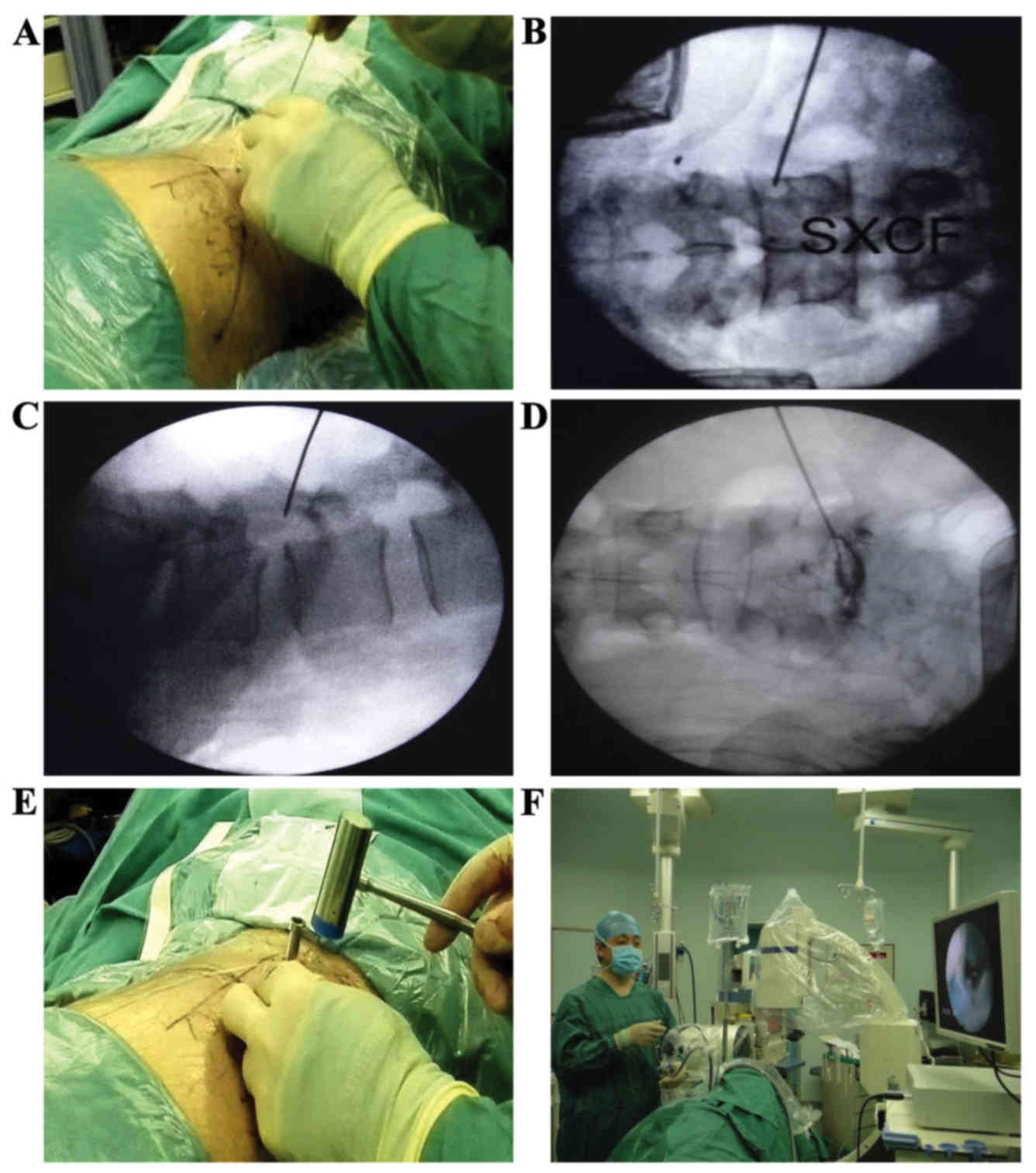Therapeutic effect of percutaneous endoscopic lumbar discectomy on lumbar disc herniation and its effect on oxidative stress in patients with lumbar disc herniation
- Authors:
- Published online on: October 20, 2017 https://doi.org/10.3892/etm.2017.5348
- Pages: 295-299
-
Copyright: © Chang et al. This is an open access article distributed under the terms of Creative Commons Attribution License.
Metrics:
Total
Views: 0 (Spandidos Publications: | PMC Statistics:
)
Total PDF Downloads: 0 (Spandidos Publications: | PMC Statistics:
)
Abstract
This study investigated the therapeutic effect of percutaneous endoscopic lumbar discectomy on lumbar disc herniation, and explored its effect on oxidative stress in patients with lumbar disc herniation. One hundred and ten patients with lumbar disc herniation were selected in The Affiliated People's Hospital of Shanxi Medical University from May 2015 to May 2016. Patients were divided into control group (n=50) and observation group (n=60) according to different surgical methods. Patients in control group were subjected to traditional open discectomy, while patients in observation group were treated with percutaneous endoscopic lumbar discectomy. Surgical-related indicators, ODI and VAS scores before and 3 months after surgery, serum inflammatory factors and oxidative stress indicators were compared between 2 groups. There was no significant difference in operation time between the groups. Blood loss, incision size and time of bed rest in observation group were better than those in control group (P<0.05). Compared with preoperative levels, ODI and VAS scores of the two groups were significantly reduced at 3 months after surgery, but the scores of observation group were significantly higher than those of control group (P<0.05). There were no significant differences in the levels of serum inflammatory factors TNF-α and CRP and oxidative stress indicators MDA, MPO, SOD and TAC between the two groups before surgery (P>0.05). Levels of serum inflammatory factors TNF-α and CRP and oxidative stress indicators MDA and MPO were significantly lower and levels of oxidative stress indicators SOD and TAC were significantly higher in observation group than in control group (P<0.05). Therefore, treatment of lumbar disc herniation with percutaneous endoscopic lumbar discectomy has the advantages of small trauma, less blood loss and fast recovery, and can effectively improve the dysfunction, reduce pain and serum levels of inflammatory factors, and improve the levels of oxidative stress indicators, thereby improving the surgical results. Thus, this method should be considered for wide-use.











